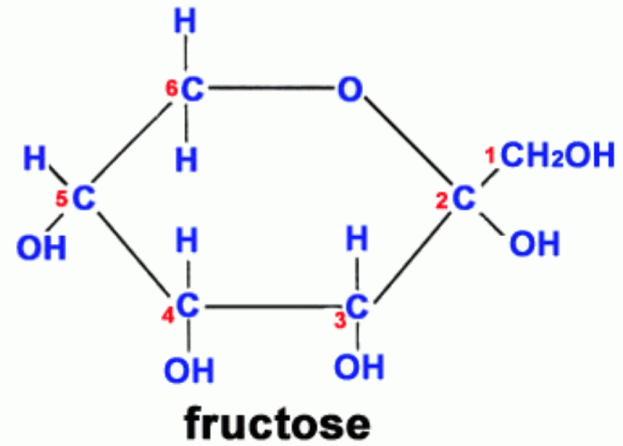Consumption of high fructose corn syrup (HFCS) has been linked to a variety of adverse health conditions, including non-alcoholic fatty liver disease, type II diabetes, increased blood pressure, dislipidemia (i.e. decreased good cholesterol, HDL), and obesity (Nseir et al. 2010).
So, consumption HFCS is not good for health. But, I’d like to add a bit of perspective: the main sugar found in fruit is fructose! Is it possible to suffer from the same adverse metabolic effects by eating too much fruit? How much fruit would one have to consume to reach the levels of fructose found in soda?
One 20 oz. soda contains 240 calories and 65 g sugar. All of this sugar comes from HFCS, which is 55% fructose. To determine the amount of fructose in soda, we multiply 65 grams by 0.55, to obtain 35.75 grams of fructose.
How much fructose is contained within fruit? When normalized to the same amount of calories as a 20 oz. soda, bananas contain 16.4 g of fructose; strawberries, 20.1 g; cherries, 20.8 g; blueberries, 21.2 g; oranges (navels), 21.6 g; peaches, 24.0 g; raisins, 24.0 g; pears 27.4 g; grapes, 28.6 g; apples, 32.0 g. So, we see that most fruits, with the exception of apples contain about 10 grams less fructose than that found in a 20 oz. soda.
If you’re worried about the adverse metabolic effects from eating too much fructose, I suggest, upon your next visit to the doctor to pay close attention to your blood test results. If your triglycerides are higher than 60 mg/dL, if your HDL is low (~40 µM), and if you have liver enzyme (ALT and AST) readings higher than 20 U/L, cutting down fructose containing foods would be a good idea.
If you’re interested, please have a look at my book!
References:
Fructose values determined via http://www.nal.usda.gov/fnic/foodcomp/search/
Nseir W, Nassar F, Assy N. Soft drinks consumption and nonalcoholic fatty liver disease. World J Gastroenterol. 2010 Jun 7;16(21):2579-88.

Excellent! I admire all the helpful data you’ve shared in your articles. I’m looking forward for more helpful articles from you. 🙂
http://colleenrose93.tumblr.com/
LikeLike
Reblogged this on nutritionista nation.
LikeLike